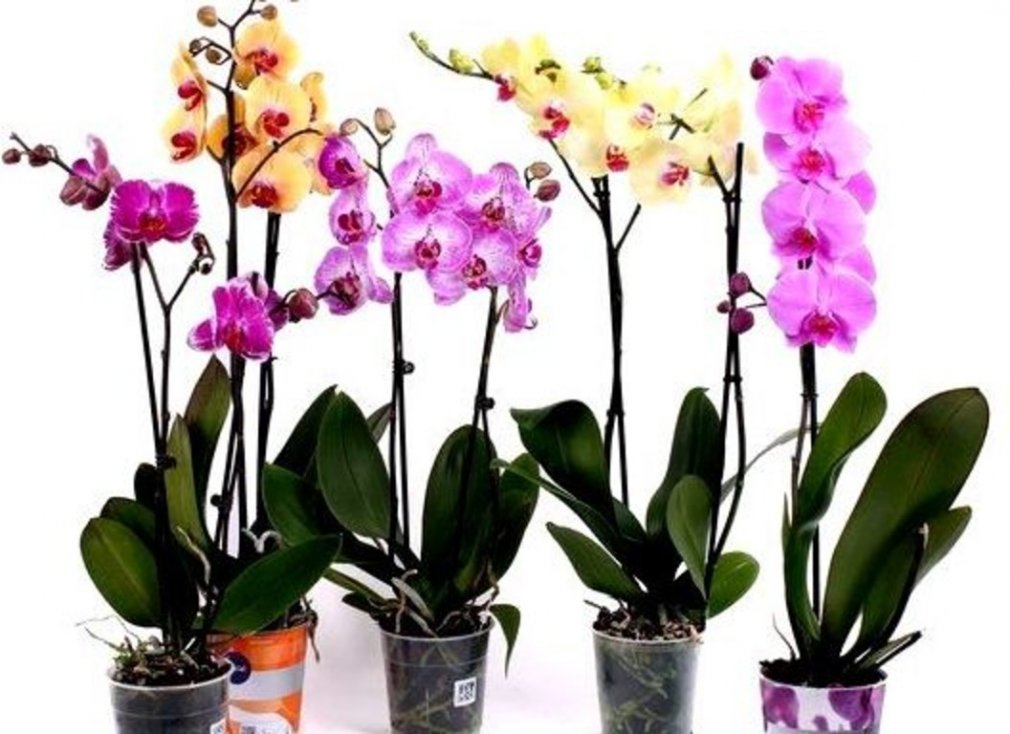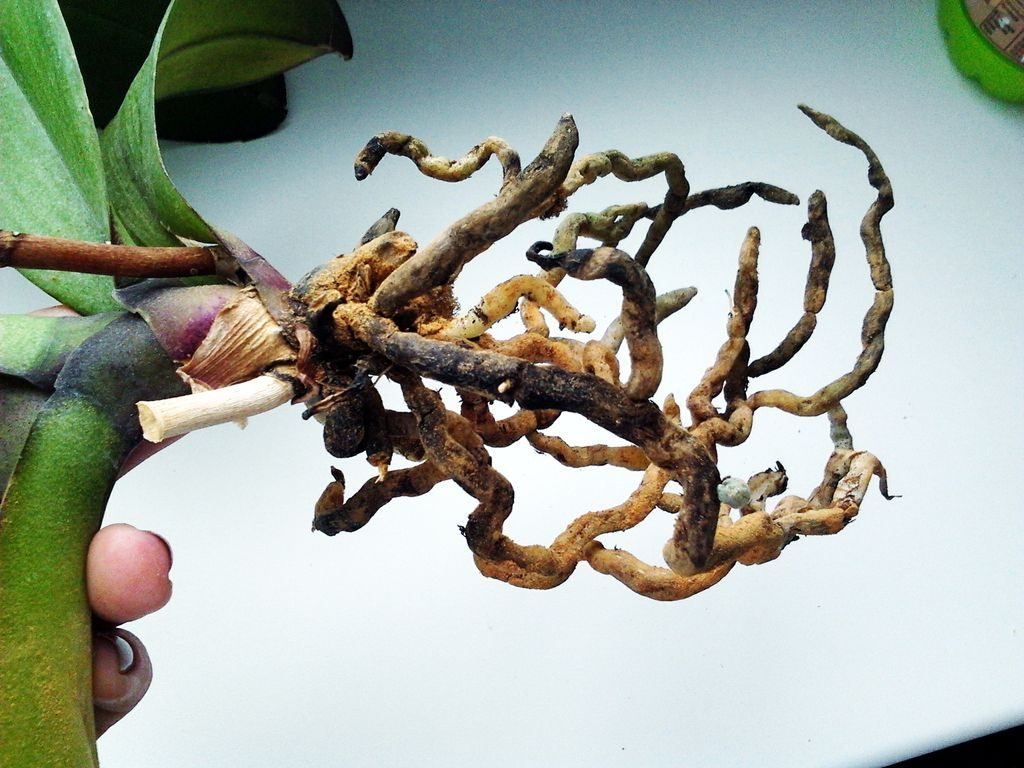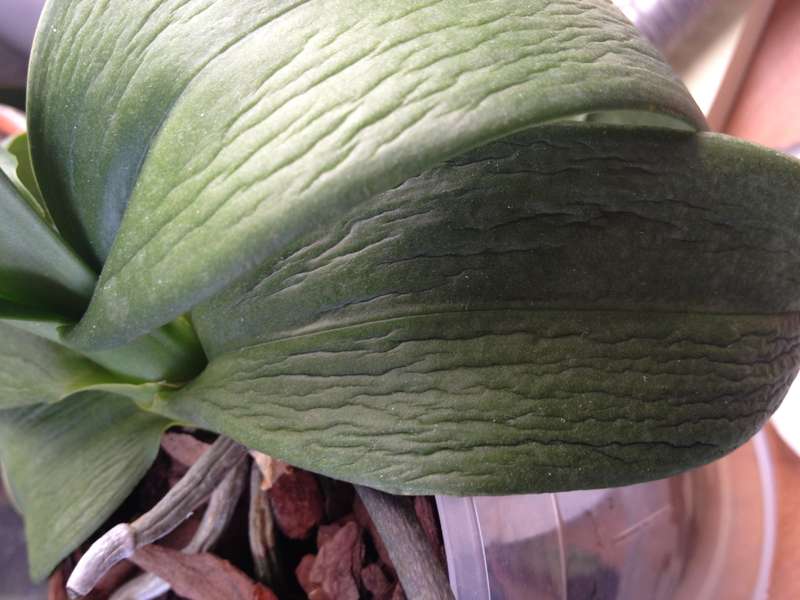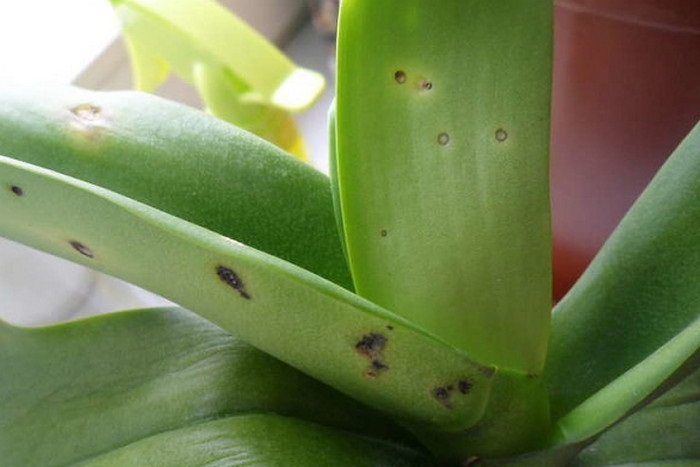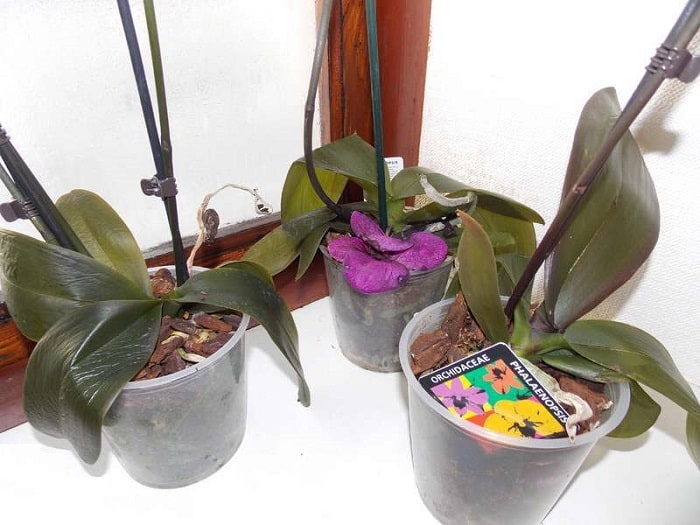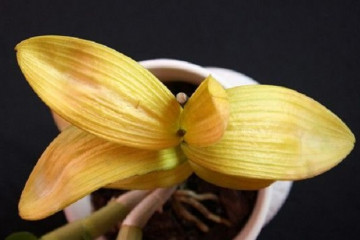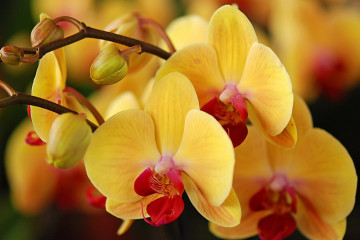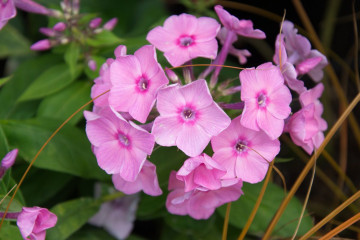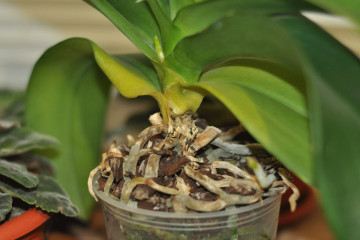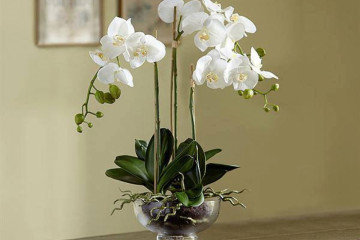Orchid leaves lost their turgor and wrinkle: what to do to restore
Content:
The luxurious regal appearance of a blooming orchid gives people the joy of contemplating beauty. The drooping flaccid leaves of the flower cause chagrin. The question arises: the leaves of the orchid have lost their turgor and wrinkle, what to do?
The main reasons for the loss of turgor
External signs of loss of leaf turgor:
- lethargy;
- wrinkling;
- discoloration.
With the development of this process, the leaf is shed, regardless of its location on the stem and age. More often this trouble catches up with novice flower growers, but it is also found among experienced lovers of an exotic flower.
When an orchid loses leaf turgor, what to do? It is necessary to find the cause of the appearance of shriveled leaves, only then to start restoring the flower.
This can lead to:
- decay of the root system and its death due to excessive watering;
- insufficient watering, which affects the metabolic processes of the plant;
- infections, fungal and bacterial;
- no transplant was made after purchase - high density of soil in the transport container;
- placing a pot with an orchid near heating appliances or on a strongly lit windowsill.
Humidity
The orchid is very sensitive to the amount and regularity of moisture. Inexperienced growers begin to water the orchid like an ordinary indoor flower, which often leads to its death.
The moisture content of the potting medium and the ambient air in the room should be kept at a constant level favorable to Phalaenopsis.
Dry air will lead to yellowing and loss of turgor in the orchid.
When the substrate is kept dry for a long time, the root system loses its ability to absorb moisture and supply it to the entire plant. This leads to disruption of metabolic processes within cells, the volume of their cytoplasm decreases, and the pressure on the cell walls decreases. This primarily affects the leaves: they turn yellow, lose their elasticity, i.e. turgor.
The appearance of the orchid is influenced by excessive moisture in the soil, which leads to rotting of the roots, as a result of which the plant itself becomes sick.
If, when spraying the orchid, you do not wipe the leaves and do not remove the water lingering in the axils of the leaves, they begin to rot.
Dense soil
The root system provides all parts of the plant with oxygen, nutrients and moisture in the substrate. If there is a lack of them, an insufficient amount of substances also enter the leaves, and the leaves lose their turgor.
The flower should be transplanted after 2-3 years due to the compaction of the substrate. During this period, the substrate cakes and becomes denser, its small pieces become even smaller and denser over time, which leads to a moisture retention in it and a decrease in its supply to the plant, at the same time the substrate decays.
The caked soil does not allow air to reach the roots, their participation in the process of photosynthesis ceases, which leads to the weakening of the entire plant, while the leaves look sluggish and wrinkled.
Overheating of roots
Direct sunlight on the pot and the location of the orchid close to heaters can lead to overheating of the substrate. When the substrate overheats, moisture quickly evaporates from it, and the roots feel a lack of it.
Other
In addition to the reasons listed above, there are other factors that affect orchid turgor:
- Getting used to new living conditions, when the plant is transferred from the conditions of a humid greenhouse to apartment buildings - with drier air;
- Natural self-rejuvenation of the flower, in which there is a decrease in the turgor of the lower leaves, they lose their vitality, become yellow, flabby, gradually dry out and die off;
- Excessive removal of roots during the transplantation process, which leads to the transfer of less nutrients and moisture from the substrate through the roots. Lack of nutrition affects the functioning of leaflet cells;
- Violation of the rules of care and its irregularity;
- The introduction of excessive and frequent dressings that disrupt metabolic processes. Excess fertilizers remain on pieces of the substrate, the inner walls of the pot, roots, which can lead to their injury and cause burns;
- Prolonged flowering, depleting the plant when the missing nourishment for the flowers is taken from the leaves;
- The accumulation of dust on leaves reduces light absorption, making photosynthesis difficult. The top layer of the leaf dries up, and it wrinkles over time.
Turgor recovery options
The orchid has lost the turgor of the leaves, what to do? First, they carefully examine all parts of the plant, check whether the place where the flower is placed meets the requirements for keeping orchids.
All possible options for loss of turgor are analyzed in turn:
- insufficient and untimely watering;
- lack of spraying;
- lack of nutrition;
- the state of the root system.
How to successfully restore leaf turgor in the Phalaenopsis orchid is discussed below. The correct watering regime must be applied. If, after a while after watering, the appearance of the flower improves, then this was the reason. Spraying led to the appearance of elasticity and shine of the foliage - the factor is eliminated. After feeding, the leaves look healthy, which means that the flower did not have enough nutrition.
To check the roots, you will have to remove the flower from the pot, examine carefully the roots to detect and remove rotten and dried ones, treating the sections with cinnamon powder or charcoal. The presence of salt deposits from fertilizers is removed in the same way. You can restore the root system faster by using a root growth stimulant.
It is necessary to make sure that the substrate is in good condition, if it does not match, replace it with a fresh one. Change the place of installation of the flower if it is intensely illuminated by the sun or is located near heating devices.
In order to quickly return turgor and a healthy appearance to the flower:
- succinic acid is added to the water, a dried plant is lowered there for a while;
- the plant affected by waterlogging is dried, placed in a new substrate.
After transplant
If the purchased orchid is not transplanted immediately, this usually leads to disease and death.
Most often, the store substrate contains a peat pot or a compacted piece of sphagnum. They retain moisture well, which, even without watering, can cause rotting of the substrate and roots.
Although outwardly the flower will look quite healthy for some time, the fungus has already infected the roots and other tissues. Restoring it is a laborious and not always successful exercise.
If the flower was transplanted on time, and the leaves lose their elasticity and wither, it is necessary to analyze the irrigation system, check the ventilation and the drying time of the roots. A failure in the system (frequent watering) will cause a gradual degeneration of the roots in the central part of the tank, because ventilation is worse in it.
Orchid treatment and care
It is not so often possible to get a healthy plant in the store. Usually, a purchased flower has signs of waterlogging, rotting of the roots and the lower part of the stem. Even signs of fungal and bacterial diseases are noticeable.
The presence of dark and light spots, stripes on the leaves speaks of plant diseases.
Viral infections are the most dangerous and incurable, they appear when using infected equipment. Bacterial - weakened specimens usually suffer, this happens quite rarely, but leads to the death of the flower due to the death of the roots.
The appearance, in addition to stains, of plaque on the leaf plates speaks of fungal diseases that occur more often with a decrease in temperature. Waterlogging leads to the rapid development of mycosis - a dangerous fungal disease, later bacterial infections join it.
With a dry content, the development of mycosis is slow, if the growth and regrowth of roots go faster than the fungus spreads, then the orchid can live for quite a long time. The main symptom of the disease is the rapid rate of wilting of the lower leaves.
The main way to combat mycosis – carrying out preventive measures:
- after transplantation, mandatory treatment with antifungal agents;
- exclusion of the use of abundant irrigation with stagnant water, shower.
If the plant is sick, it is necessary to carry out the same operations as for the purpose of prevention:
- reduce the frequency of watering;
- reduce air humidity;
- use antifungal drugs.
In such cases, the use of fungicides will be effective, with the obligatory pruning of the affected areas and the processing of the sections with cinnamon or charcoal.
Other agents are used to fight bacterial infections, for example, copper sulfate.
The conditions in the apartment are fundamentally different from the greenhouse and hothouse. The purchased flower should get used to and get used to the new habitat. At this time, the orchid can lose 2 lower leaves and somewhat reduce the turgor on the rest. But as fresh roots and leaves appear, the orchid takes on a healthy appearance.
When transporting in winter or keeping an orchid at a temperature of + 16 ° C, it is possible to see traces of frostbite on the leaf plates in the form of slimy jelly-like spots that increase in size. To preserve the plant, you should urgently start to restore the flower.
Leaves with such spots cannot be restored. To prevent the stain from spreading to the trunk, it should be removed from the trunk as soon as possible, for this:
- make an incision at the end of the sheet;
- gently pull the halves in different directions;
- remove them from the trunk;
- the place of removal is sprinkled with wood ash.
Such removal of the frostbitten leaf plate does not leave residues that decompose under the influence of moisture, which allows you to preserve the orchid.
Compliance with the rules of care and the implementation of agricultural techniques will allow you to grow a flower that will decorate the interior of the house for a long time with its magnificently blooming arrows.
